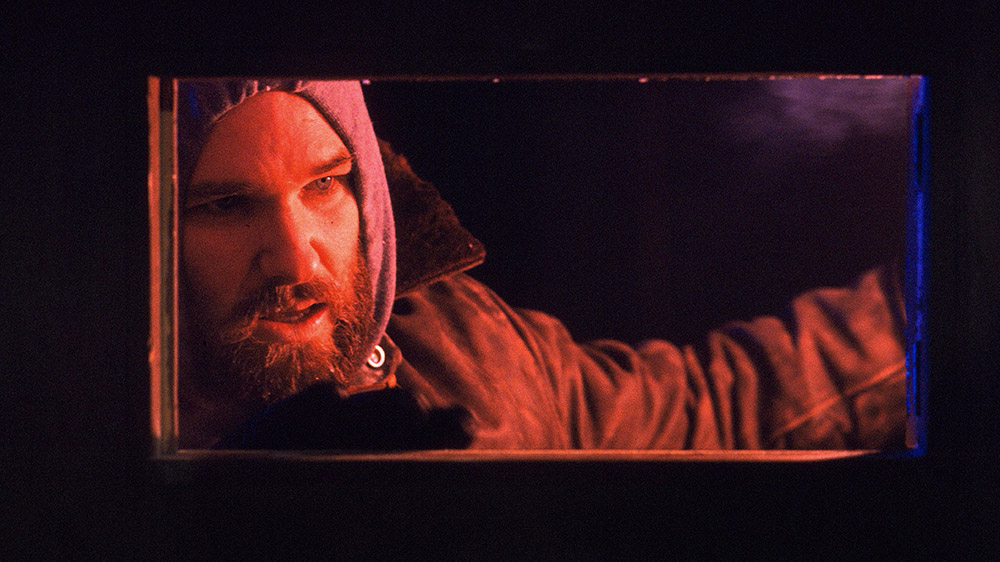With the growing critical reception around Annihilation (2018), based on the Jeff VanderMeer novel, and other recent semi-surrealist triumphs like David Lynch’s Twin Peaks: The Return (2017) and Del Toro’s The Shape of Water (2017) – a surge of interest in the weird fiction genre is happening, which some critics have even dubbed ‘A Weird Renaissance’.
The growing market of weird genre books has been rapidly snowballing ever since a group of authors including M. John Harrison, China Mieville and Jeff VanderMeer coined the term ‘New Weird’ on an internet forum in 2003. We have already seen this trend begin to roll over into the cinema, and it’s likely that this is only the tip of the iceberg in terms of what film audiences can expect in the near future.
Cinema has always had a tenuous relationship with the weird fiction genre, which I will attempt to breakdown in this article. Obviously, books have long been the embryo for screenplays.

For those unfamiliar, ‘weird fiction’ is a genre of speculative fiction originating in the late 19th and 20th century, born out of the Gothic and Decadent movements. Often defying definition, the term ‘weird’ is frequently debated, but has been known to encompass everything from the ghost story, mythical monsters, and supernatural surrealism to otherworldly or alien monstrosities. The genre was propelled initially by turn of the century writers like Arthur Machen, Sheridan Le Fanu, William Hope Hodgson, Clark Ashton Smith, and perhaps the most influential writer on 20th century horror, Howard Phillips Lovecraft.
Fans of Lovecraftian horror have waited multiple decades for a faithful tribute to the author’s work, having many terrible film adaptions to sift through, such as The Dunwich Horror (1970), The Curse (1987), The Unnamable (1988), The Resurrected (1991), and Beyond the Wall of Sleep (2006). There have also been many amateur productions of his work, including some more richly arthouse pieces like The Call of Cthulhu (2005). More respected translations of Lovecraft’s work have slipped through the cracks too, such as the beloved Stuart Gordon films Re-Animator (1985), From Beyond (1986), and Dagon (2001). Meanwhile, fans still hold out for the shelved Guillermo Del Toro epic ‘At The Mountains of Madness’ in spite of the deep unlikelihood of that ever occurring.
More subtle influences from Lovecraft can be seen in other horror franchises, being a huge influence on Stephen King and many other horror writers, not to mention a huge influence on the writers of console games. He is the creator of the Necronomicon in Sam Raimi’s Evil Dead franchise, and subsequent remakes (Lovecraft could arguably also have set in motion the entire Zombie genre in his genre defining ‘Herbert West: Re-animator’). Perhaps the most effective of these influences occurs in the work of John Carpenter, whose films like In the Mouth of Madness (1994) are a direct homage. But most certainly, in one of the most iconic horror/weird fiction stories ever filmed, The Thing (1982), playing almost like a sequel to Lovecraft’s ‘At The Mountains of Madness’, is much more of a standalone work than other adaptations and its influence and legacy continue to be seen today.

Looking back on this film in light of the changing genre of the weird, it seems an appropriate kick-off point for the discussion, as new authors breaking out of the Lovecraft fixation of the 20th century are redefining the weird genre, and taking it to more interesting places.
John Carpenter’s The Thing debuted in the US on the 25th of June, 1982. Whilst critically panned at the time, it has been consistently re-evaluated, becoming one of the most lauded cult films of the horror genre. The Thing also satisfies every definition of weird fiction. Set amidst the cosmic horror of eclipsing outer space, and the savage wasteland of the Antarctic, Carpenter utilises total paranoia to play at human phobias of ourselves and others. The ‘Thing’ itself, is intrinsically ‘weird’, being able to take multiple forms. Conglomerations of human body parts and a severed head that walks on crab-like legs for example. Part dog, part human, part alien biology, the creature remains indefinable until the end credits, creating a constant feeling of dread.
Carpenter’s cult blockbuster is of course, not the only weird film to create a unique sense of the fear of the unknown. Around its inception, 1980’s horror was flourishing with many weird masterpieces such as Basket Case (1982), Cronenberg’s Videodrome (1983), Scanners (1981) and The Fly (1986) to name a few, all of which focus around metamorphoses and body horror, perhaps driven by the iconic works of Clive Barker (who labelled his own works ‘Fantastique’). Japan has always been at the forefront of the weird, with bizarre works like Spiral (2000), about a small Japanese town who are tormented and obsessed by spirals. This decade has increasingly seen quality weird fiction translate to films too, from Grabbers (2012) and John Dies at the End (2012), to It Follows (2014) and The Void (2016), all which masterfully play off the fear of the unknown to build a slow building sense of unease.

In fiction, new writers are subverting genre conventions all the time, and seem increasingly influenced by the works of surrealists like Boris Vian, Bruno Schultz and Kafka, as well as more diverse authors than the European and American centric early writers of the genre; from Gabriel Garcia Marquez to Indian weird fiction author Manjula Padmanabhan.
Can we hope to see film adaptations of masters of the New Weird, such as Michael Cisco, who’s Lynch-like surrealism abounds in works like “Unlanguage”, published by Eraserhead press, about a suicide victim trying to write himself back into existence? The likelihood seems high, with new adaptations of Jeff VanderMeer already in the works and the upcoming Laird Barron adaptation They Remain (2018) receiving critical praise. John Langan, Caitlin R. Kiernan, China Mieville and M. John Harrison are just a few of the names I personally hope to see translating to film adaptations as we move toward the 2020’s.
Whilst the 2011 remake had some nice effects and paid homage to the original, it pales in comparison to the suspense in the original film. John Carpenter’s The Thing remains a firm precedent, in what the weird and cosmic horror genre can achieve when human paranoia is pushed to its limits. What shapeshifting nightmares can summarise our 21st century fears and anxieties? What horrid nightmares have the writers of today begun to manifest that will soon haunt the silver screen in their many weird guises?
On this we can only speculate.
Fun Fact:
In filming the climactic scenes of The Thing, Kurt Russell almost blew himself up with a stick of dynamite, literally blown backwards by the blast which he anticipated poorly.
Further reading: Check out our reviews of The Shape of Water and Annihilation next.




COMMENTS